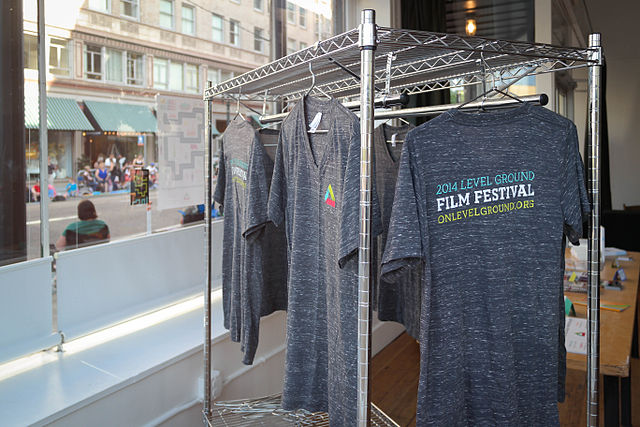
Thammasat University students interested in film, business, entrepreneurship, sociology, cultural politics, economics, and related studies should find useful a new Open Access book available for free download at this link:
https://directory.doabooks.org/handle/20.500.12854/96237
Rethinking Film Festivals in the Pandemic Era and After is edited by Antoine Damiens, Research Associate at York University, Toronto, Canada and Associate Professor Marijke de Valck, who teaches film and media studies in the Department of Media and Culture, Utrecht University, the Netherlands.
The TU Library collection includes several books about different aspects of film festivals.
The publisher’s description of Rethinking Film Festivals in the Pandemic Era and After explains:
This is an open access book. This edited collection aims to document the effects of Covid-19 on film festivals and to theorize film festivals in the age of social distancing. To some extent, this crisis begs us to consider what happens when festivals can’t happen; while films have found new (temporary) channels of distribution (most often in the forms of digital releases), the festival format appears particularly vulnerable in pandemic times. Imperfect measures, such as the move to a digital format, cannot recapture the communal experience at the very core of festivals. Given the global nature of the pandemic and the diversity of the festival phenomenon, this book features a wide range of case studies and analytical frameworks. With contributors including established scholars and frontline festival workers, the book is conceived as both a theoretical endeavour and a practical exploration of festival organizing in pandemic times.
As media reports announced last year,
Film Festivals Are Evolving for the Better
Covid-19 is making big, weeklong gatherings of cinephiles complicated, if not impossible. What emerges in their place could change the cinema landscape… So what, then, does the film festival of the future look like? In the short term, it needs to be agile and encompass some form of digital and in-person involvement. Right now, each fest seems to be reacting to the evolving situation it’s in—Omicron made Sundance in Park City, Utah untenable, but organizers are still planning for an in-person Berlin Film Festival in February, although it’s been shortened. But even if Covid is, one day, a thing of the past, another virus could take its place. And film festivals have always struggled with accessibility issues that can be mitigated by allowing people to attend from home. So perhaps hybrid festivals are the future even in the best of times. Cinema culture exists on multiple planes; it’s time film festivals did too.

The book begins:
What happens when film festivals can’t happen? Until March 2020, this question was not on anyone’s mind: festivals have been typically conceived as recurring, cyclical celebrations—as an integral part of the cultural life of towns and communities. Each year or each season, they bring communities together and mark the passing of time. Since their global proliferation in the second half of the twentieth century, film festivals have played a similar role in the cultural life of cinema: each year, the festival calendar largely influences the release, distribution, and eventual consecration of international films. Indeed, film festivals are f irmly ingrained in global systems of production, circulation, and consumption of moving images. Top-tier festivals launch film titles and establish brand names that appeal to global audiences: they serve as a prime supply chain for quality programming in cinemas and arthouses. Similarly, a multitude of small- and medium-sized festival events fills the many gaps left by regular distribution: they cater to specific audiences and communities, specialize in certain genres and themes, or focus on particular causes and agendas. Beyond such economic and curatorial values, film festivals service a variety of stakeholder interests, ranging from tourism, regional development, and city marketing to policy goals, political ideals, and soft power. With the arrival of a pandemic era, this complex machinery came to a grinding halt. The unthinkable became reality: sanitary and containment measures taken to combat the spread of the SARS-CoV-2 virus1 had an unprecedented impact on society and on film festivals worldwide. “Normal” activities, such as people gathering collectively in theaters and public spaces to enjoy films, quickly became redefined as a high-risk health hazard. Festivals have been forced to postpone, cancel, switch to online formats, or move outdoors. Each of these formulas brings forth particular practical challenges for both festival participants and the film industry at large (including, but not limited to, the status of world premieres, copyrights online, geoblocking, navigating the politics of digital platforms, revenue loss, the lifecycle of films, and the awards season). To that end, the Covid-19 pandemic exposed in practice what had been noted in theory before; that singular film festivals are connected to global networks in which flows are subjected to temporal and spatial positionings, marked by competition, hierarchization, and (explicit as well as latent) dependencies. Indeed, the cancelation of major, A-list festivals fundamentally impacted both the geographic organization and the calendar of the film industry. These big, established international festivals play the role of cultural gatekeepers: through their selection and awards, they help define which films are worth seeing and which films will be ignored. These choices have major consequences for the circulation of a film in different geographic markets and for its potential run during the awards season. Furthermore, these large, established international festivals often act as f ilm markets where professionals buy and sell films, pitch new ideas, and look for potential collaborations. While some festivals pivoted to online formats, these networking activities were difficult to replicate online. Covid-19 also impacted smaller and medium-sized festivals. These events not only constitute a secondary market (exhibiting films, paying screening fees, and thus financing the film ecosystem) but also create and sustain communities around films. Given that they often rely on volunteer or underpaid labor and have limited access to material resources, some of these festivals are particularly at risk; they may not survive the pandemic. At minima, this crisis thus both forces us to confront the fundamental role played by festivals in the economy of film and reveals the interconnected, transnational nature of its circuits. Tellingly, even the few festivals that were held in person—for instance, in countries that were not yet impacted by or had successfully contained the spread of Covid-19—experienced the effects of disruptions elsewhere on the festival circuit. This edited collection aims to both document the effects of Covid-19 on film festivals and to further theorize film festivals as they adapt and transform. To some extent, this crisis begs us to consider what happens when festivals can’t happen: while films have found new (temporary) channels of distribution (most often in the forms of digital releases), the festival format appears particularly vulnerable in pandemic times. Imperfect measures, such as the move to a digital format, cannot recapture the communal experience at the very core of festivals.

(All images courtesy of Wikimedia Commons)
